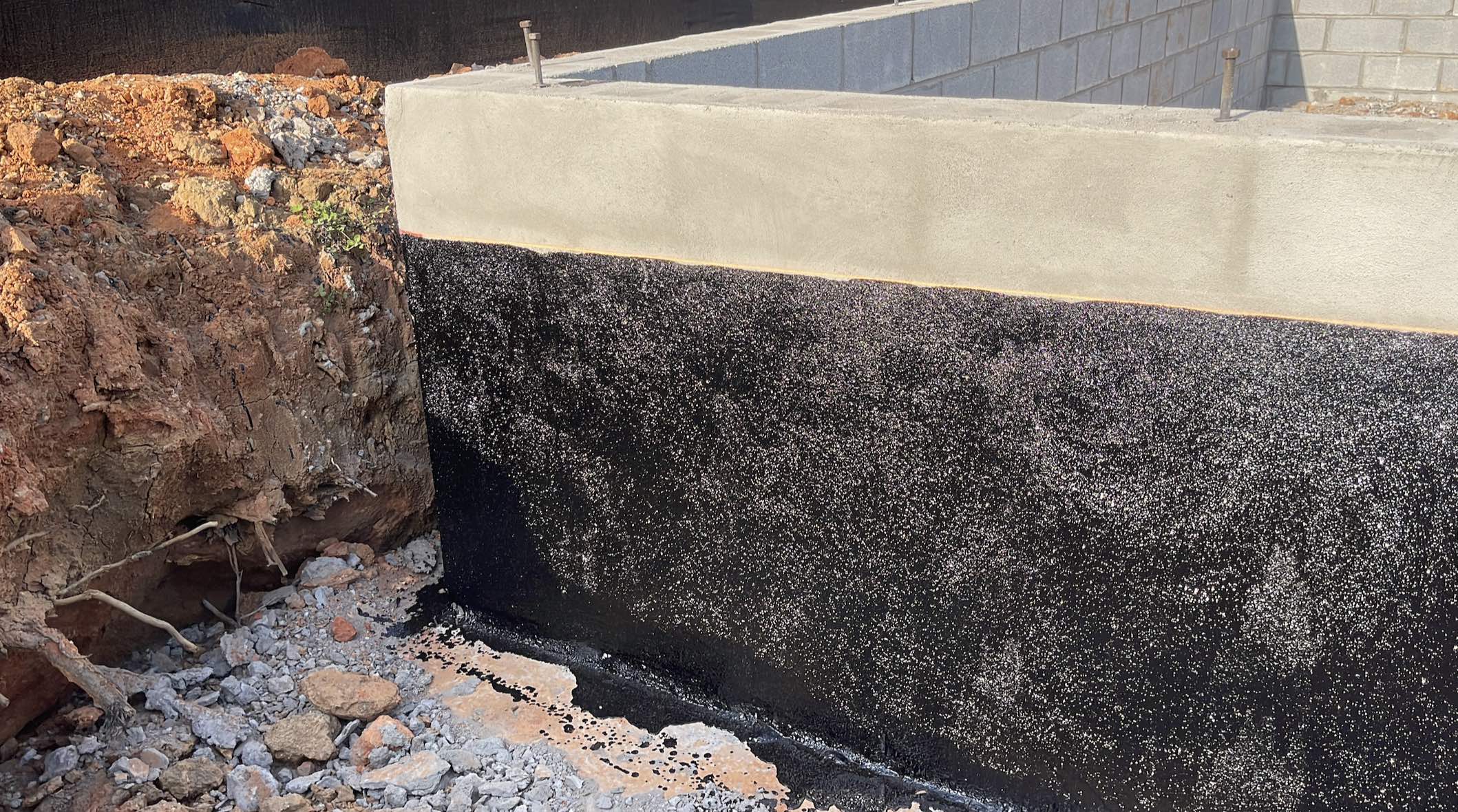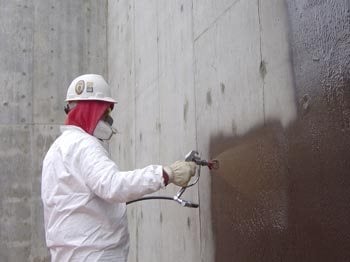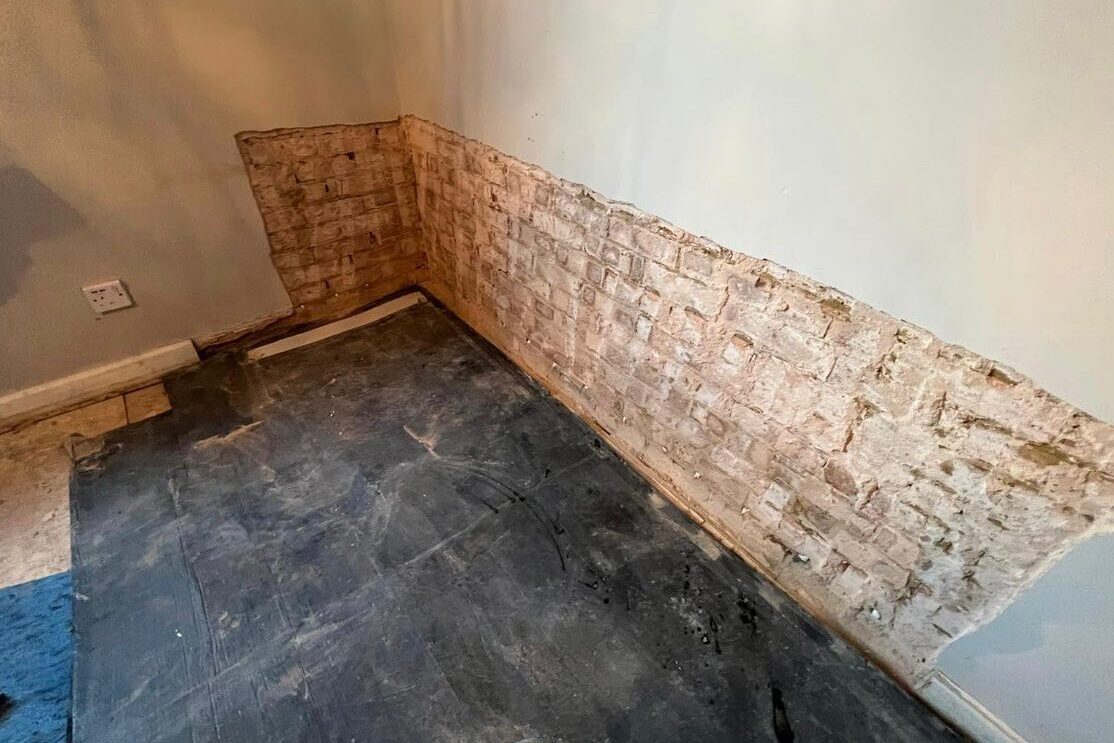Fighting indoor moisture through mould removal newcastle: What really works?
Fighting indoor moisture through mould removal newcastle: What really works?
Blog Article
Checking Out the Numerous Techniques and Solutions for Effective Damp Proofing
Wetness in buildings poses significant challenges to both structural integrity and indoor air high quality. Numerous techniques and options have actually arised to fight this prevalent concern. From conventional damp-proof membranes to ingenious chemical therapies, each approach supplies distinct advantages. Comprehending these options is crucial for effective moisture control. Nevertheless, picking the right service depends upon certain structure conditions and needs, prompting additional expedition into the most reliable damp proofing methods offered.
Comprehending the Root Causes Of Dampness
Although moisture can develop from numerous sources, understanding these causes is important for effective remediation. Generally, moisture originates from three key resources: increasing moist, permeating damp, and condensation. Climbing damp happens when groundwater takes a trip up-wards through permeable materials, such as block or stone, usually as a result of a lack of an effective barrier (mould removal newcastle). Penetrating moist is usually caused by outside factors, consisting of roof leaks, damaged rain gutters, or harmed wall surfaces, permitting water to penetrate a building. Condensation, on the other hand, arises from excess moisture airborne, typically exacerbated by bad ventilation and temperature distinctions, resulting in water droplets creating on surfaces. Recognizing these underlying issues is necessary, as each kind of moisture calls for a tailored strategy for removal. Appropriate analysis helps in figuring out one of the most reliable solutions, inevitably securing the architectural integrity of a structure and improving interior air top quality
Traditional Damp-Proof Membranes

Chemical Damp-Proofing Solutions
Chemical damp-proofing services use a cutting-edge strategy to preventing moisture intrusion in buildings. These methods generally include the application of fluid chemicals that penetrate masonry and form an obstacle against increasing moist. Frequently utilized chemicals include silanes, siloxanes, and other water-repellent representatives that react with surface materials to create a hydrophobic layer.The application process typically requires drilling openings right into the wall surfaces, infusing the chemical option, and permitting it to heal. This approach is especially beneficial for older structures where traditional damp-proof membrane layers might be impractical. Chemical damp-proofing can be much less disruptive and more cost-efficient than substantial remodelling projects.While effective, these options depend on appropriate application and ecological problems for peak performance. mould removal newcastle. Normal maintenance and monitoring are necessary to guarantee the durability of the damp-proofing therapy. Generally, chemical damp-proofing represents a versatile alternative for securing buildings against moisture-related damage
Tooth Cavity Wall Surface Construction Strategies
Cavity wall surface building techniques provide numerous advantages, specifically in moisture control and power performance. By integrating an air gap between 2 layers of stonework, these walls successfully mitigate water ingress while improving insulation. This mix not only shields structures from moisture however additionally adds to minimized power consumption.
Benefits of Cavity Walls
When taking into consideration effective moist proofing techniques, the benefits of dental caries wall surfaces stand out prominently. Dental caries walls consist of two separate layers, producing an air space that efficiently minimizes dampness infiltration. This style lessens the threat of wetness, as the external wall surface acts as a barrier against rain and water ingress. In addition, dental caries wall surfaces boost thermal insulation, which adds to power performance by reducing heat loss. They also provide audio insulation, helping to produce a quieter interior environment. Additionally, the air void permits air flow, which helps in dampness control and reduces the possibility of mold growth. These benefits not only improve the overall comfort of a structure yet additionally add to its durability and structural integrity.
Dampness Control Approaches
Efficient moisture control approaches are critical in tooth cavity wall building and construction to guarantee lasting protection versus moisture. One key technique entails the consolidation of weep openings, which help with water drain from the tooth cavity, preventing build-up. In addition, the use of breathable membrane layers can assist take care of moisture degrees while allowing entraped vapor to escape. Appropriate positioning of insulation is likewise essential, as it needs to not block drainage courses. Moreover, guaranteeing that the external fallen leaves of the tooth cavity wall surface are built with waterproof materials boosts total resilience. Normal maintenance checks are necessary to recognize any type of obstructions or damage early, securing the framework's honesty. Inevitably, a mix of these strategies creates a robust protection against moisture breach in cavity walls.
Insulation and Power Effectiveness
Insulation plays an important role in improving power effectiveness within tooth cavity wall surface construction. By incorporating insulating products, these wall surfaces develop a thermal obstacle that lessens warm loss and lowers power intake. Efficient insulation not only assists maintain a stable indoor temperature level yet likewise alleviates the danger of dampness, as it prevents condensation within the wall dental caries. Numerous methods, such as making use of rigid foam boards or mineral woollen, can be utilized to attain optimal insulation efficiency. Furthermore, correct setup is important to ensure that spaces and gaps are reduced, which can or else jeopardize energy performance. Eventually, a well-insulated cavity wall adds considerably to general sustainability and decreases heating & cooling expenses for property owners.
Exterior Damp Proofing Techniques
External moist proofing methods are crucial for securing structures from dampness seepage. Two reliable methods consist of the application of water resistant membranes and the installment of French drains pipes. These services aid alleviate water accumulation and protect the integrity of structures.
Waterproof Membrane Application
While different methods exist for stopping wetness access, the application of waterproof membrane layers remains an extremely effective outside wet proofing method. These membrane layers are usually made from products such as polyethylene, rubber, or customized asphalt, offering a durable barrier against water infiltration. The installation process entails applying the membrane to the external surfaces of foundations or wall surfaces, making sure full insurance coverage to stop leakages. Proper adhesion and securing at joints are vital to making best use of effectiveness. Water resistant membranes can be applied in different forms, including liquid layers and sheet membrane layers, permitting for flexibility based on the details needs of the structure. This approach not just secures structures from wetness but also enhances their longevity and structural integrity.
French Drainpipe Installment
One reliable approach for taking care of groundwater and preventing moisture accumulation around a structure's structure is the installment of a French drainpipe. This drain system includes a trench loaded with gravel and a perforated pipeline that redirects surface water far from the foundation. Appropriate setup needs cautious planning, guaranteeing that the drain slopes away from the structure to facilitate perfect water flow. Additionally, the location of the drainpipe is essential; it needs to be placed in locations susceptible to pooling or excess moisture. Normal upkeep, including clearing particles from the gravel and guaranteeing the pipeline remains unhampered, is crucial for long-lasting effectiveness. Ultimately, a well-installed French drainpipe can considerably reduce the threat of water-related concerns in cellars and foundations.
Interior Waterproofing Approaches
Interior waterproofing strategies are crucial for safeguarding a structure's interior from dampness infiltration and possible water damage. These techniques generally entail the application of specialized products and techniques created to develop a wetness obstacle within the structure. One typical method is using water-proof finishes or sealers on walls and floorings, which prevent wetness from penetrating surfaces.Additionally, mounting interior drainage systems, such as sump pumps, can properly handle water buildup in basements and creep spaces. One more approach includes using vapor barriers, which are set up to inhibit wetness activity from the ground into living spaces.Moreover, resolving any fractures or voids in walls or structures with appropriate sealants ensures a comprehensive protection versus water invasion. By applying these interior waterproofing techniques, homeowner can considerably lower the threat of mold development, structural damage, and other moisture-related concerns. Appropriate execution of these strategies is essential for long-lasting protection and building honesty.
Regular Maintenance and Evaluation Practices
Regular maintenance and evaluation practices are important for guaranteeing the long-term effectiveness of damp proofing solutions in any building. Regular checks allow homeowner to recognize early indications of moisture intrusion, such as peeling off paint, mold and mildew growth, and musty smells. These indicators can signal underlying concerns that call for instant attention.Inspections ought to be conducted at the very least each year, concentrating on susceptible areas like cellars, creep spaces, and exterior walls. During these assessments, homeowner need to analyze sealants, drain systems, and ventilation to confirm they function correctly.Additionally, keeping downspouts and gutters is crucial, as stopped up systems can result in water buildup near the foundation. Implementing a normal maintenance timetable, together with timely damp specialist newcastle repair services, can significantly expand the life expectancy of wet proofing procedures and protect the architectural honesty of the building. Aggressive measures eventually add to the general health and wellness of the living setting.
Frequently Asked Concerns
How Lengthy Does Damp Proofing Generally Last?
The period of damp proofing performance varies, typically lasting between 20 to half a century. Aspects such as application quality, environmental problems, and upkeep practices substantially influence the longevity of the moist proofing therapy.

Can I Damp Proof My Home Myself?
The individual pondered the expediency of DIY damp proofing. With appropriate research and the appropriate materials, it is possible. They additionally acknowledged the importance of specialist guidance to assure resilient performance and avoid future concerns.
What Are the Indications of Inadequate Damp Proofing?
Signs of inefficient damp proofing include persistent stuffy smells, visible mold and mildew growth, peeling paint, moist patches on wall surfaces, and wood decay - mould treatment newcastle. Home owners must deal with these concerns immediately to stop more damages and health problems
Does Damp Proofing Affect Indoor Air High Quality?

Just How Much Does Expert Damp Proofing Cost?
Expert wet proofing expenses differ significantly, typically ranging from $1,000 to $5,000 relying on the property's dimension, the extent of the moist concern, and chosen techniques. Each scenario requires a customized analysis for accurate prices. Generally, dampness originates from 3 primary sources: increasing damp, permeating damp, and condensation. When considering efficient damp proofing approaches, the advantages of cavity wall surfaces stand out prominently. Exterior moist proofing methods are essential for safeguarding frameworks from wetness infiltration. While numerous methods exist for preventing wetness ingress, the application of water-proof membranes stays a highly efficient external moist proofing strategy. Indications of ineffective wet proofing include relentless musty smells, noticeable mold development, peeling off paint, wet spots on walls, and timber degeneration.
Report this page